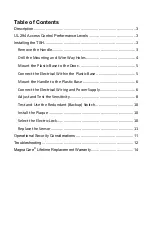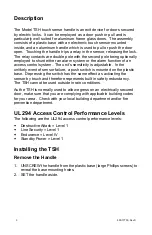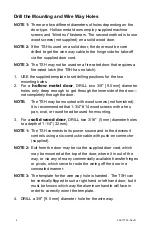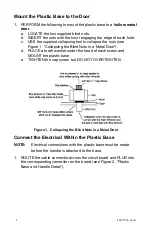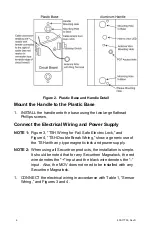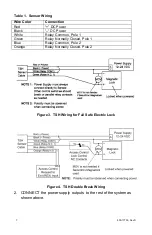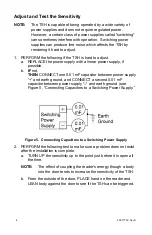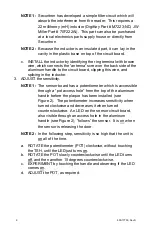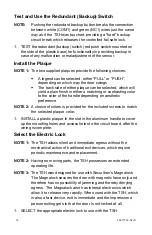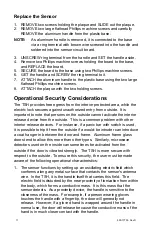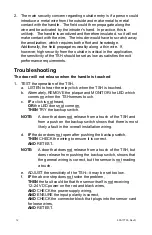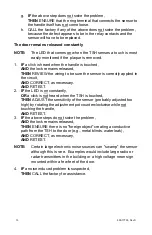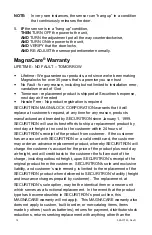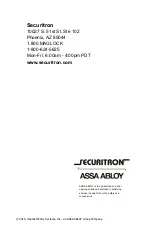
12
500-17700, Rev D
2. The main security concern regarding outside entry is if a person could
introduce a metal wire from the outside and make metal to metal
contact with the handle. The field could then propagate along the
wire and be activated by the intruder's hand. In practice, this is
unlikely. The handle is anodized and therefore insulated, so it will not
make contact with the wire. The intruder would have to scratch away
the anodization, which requires both effort and knowledge.
Additionally, the field propagates weakly along a thin wire. If,
however, high security from the outside is critical in the application,
the sensitivity of the TSH should be set as low as satisfies the exit
performance requirements.
Troubleshooting
The door will not release when the handle is touched
1. TEST the operation of the TSH.
a. LISTEN to hear the relay click when the TSH is touched.
b. Alternately, REMOVE the plaque and MONITOR the LED which
comes on when the TSH senses touch.
c.
IF
a click is not heard,
OR
the LED does not come on,
THEN
TRY the backup switch.
NOTE:
A door that does not release from a touch of the TSH and
from a push on the backup switch shows that there is most
likely a fault in the overall installation wiring.
d.
IF
the door does not open after pushing the backup switch,
THEN
CHECK the wiring to ensure it is correct,
AND
RETEST.
NOTE:
A door that does not release from a touch of the TSH, but
does release from pushing the backup switch, shows that
the general wiring is correct, but the sensor is not reading
a touch.
e. ADJUST the sensitivity of the TSH—it may be set too low.
f.
IF
the above step does not solve the problem,
THEN
the fault could be that the sensor itself is not receiving
12–24 VDC power on the red and black wires,
AND
CHECK the power supply wiring,
AND
ENSURE the input polarity is correct,
AND
CHECK the connector block that plugs into the sensor card
for loose wires,
AND
RETEST.


